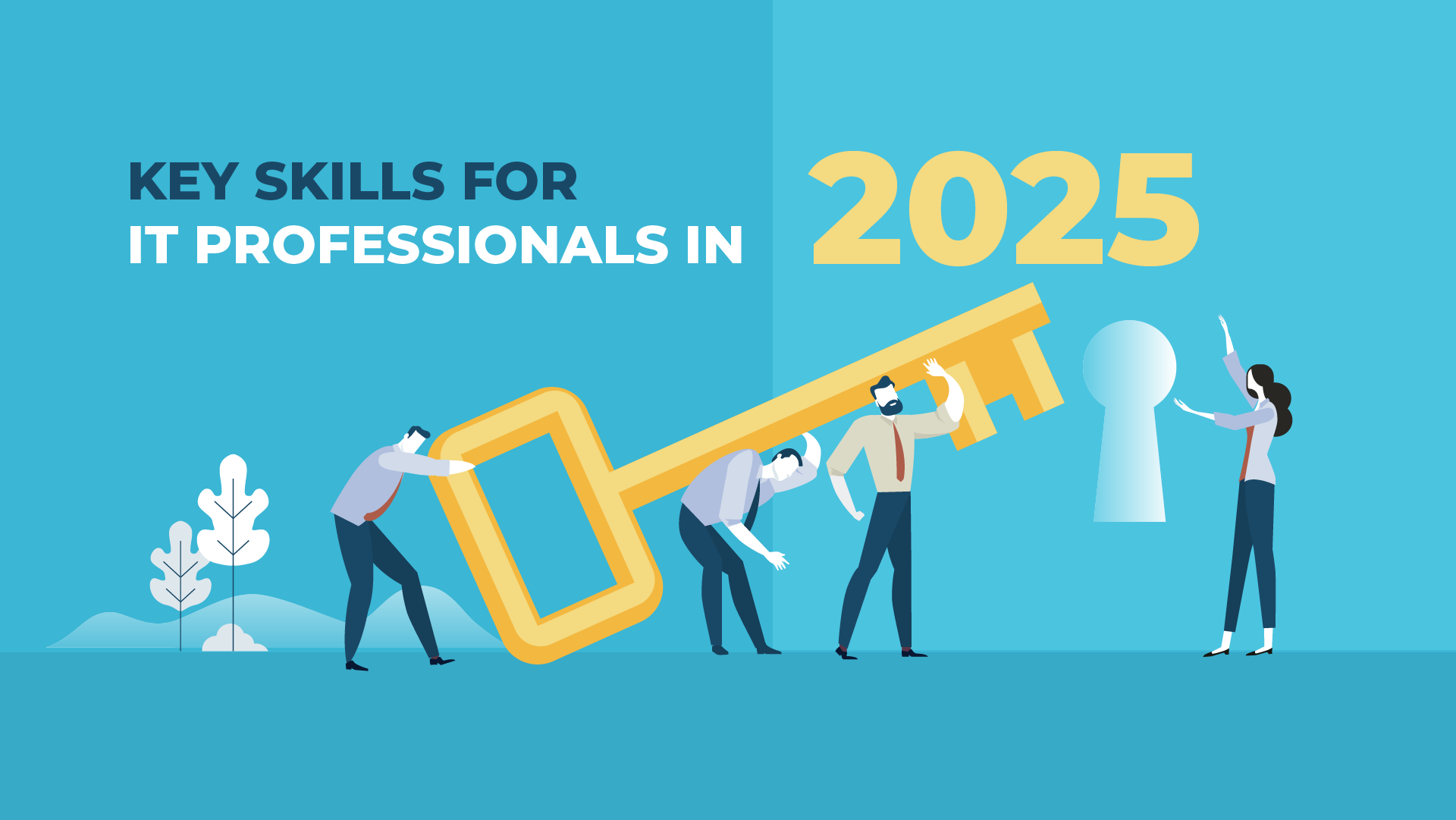Navigating a career in the tech industry comes with a lot of uncertainty—from how AI will impact jobs to which big company’s data will be stolen next. But if one thing is certain, it’s that nothing in our industry stays the same for long. And in-demand IT skills are no exception.
With the exponential growth of technology and its impact on the future of work, predicting the demand of specific IT skills is a tall task. In 2023, employers anticipated that 44% of workers’ skills would be disrupted in the following five years, with six in ten staff members requiring training before 2027 (World Economic Forum, Future of Jobs Report 2023). Still, tech job seekers can equip themselves with technical and soft skills that will increase their career durability.
[Learn more about how to gain career durability in this edition of The PTP Report.]
So which skills will be the most in-demand in 2025? We compiled a list based on the industry trends that shaped 2024 and our 26+ years of tech recruiting expertise.

Top Skills for IT Professionals in 2025
The following are expected to be the most in-demand technical and soft skills for tech professionals in the next year. Build proficiency in these key areas, from broad concepts to specific tools, to set yourself up for a successful year in your tech career.
Technical Skills
1. Cloud Engineering & DevOps
Cloud-native development—the software approach of building, deploying, and managing modern applications in cloud computing environments—requires skills such as serverless architecture, microservices, and containerization.
Infrastructure as code (IaC) describes the ability to provision and support your computing infrastructure with code rather than manual processes and settings and requires proficiency in tools like Terraform and Ansible to automate cloud infrastructure.
2. Cybersecurity
Zero Trust architecture is a growing cybersecurity practice that requires maintaining strict access controls. Successful candidates will demonstrate knowledge of the principles and implementation of Zero Trust security models.
Advanced threat intelligence describes the ability to analyze and act upon threat intelligence data, using platforms like Splunk or Palo Alto Cortex XSOAR.
3. Artificial Intelligence & Machine Learning (AI/ML)
AI-driven automation describes the ability to build AI models for automation using frameworks like TensorFlow, PyTorch, or cloud AI platforms. This skill can be leveraged internally and externally.
[Learn more about AI upskilling in this edition of The PTP Report.]
Natural language processing (NLP) enables the creation of applications like chatbots and voice recognition, which are becoming increasingly popular in customer service, and the personalization of web platforms.
4. Data Science & Analytics
Data engineering skills require proficiency in data pipeline tools, like Apache Kafka and Spark, along with cloud data platforms, like AWS Redshift, Google, and BigQuery.
Edge computing skills ensure one’s ability to handle data processing at the edge for real-time analytics in IoT devices, for example, which are growing in popularity as a solution for healthcare and other sectors of tech.
5. Software Development
Low-code/no-code development is a rising trend thanks to AI’s accessibility and may require familiarity with platforms like OutSystems, Appian, and PowerApps.
Quantum computing programming involves knowledge of quantum algorithms and platforms like IBM Q or Microsoft Azure Quantum.
6. Networking & 5G
SD-WAN (Software-Defined Wide Area Network) requires the ability to optimize and manage wide-area networks with SD-WAN technologies.
5G network architecture requires understanding of network slicing and edge computing within 5G frameworks.
Soft Skills
7. Communication & Collaboration
Cross-functional collaboration skills show one’s ability to work seamlessly with professionals in other departments—like product, operations, and business teams—especially in DevOps and Agile environments.
Remote team leadership is in increasing demand due to the normalization of remote, hybrid, and asynchronous work. It may require proficiency in digital collaboration and communication tools like Slack, Jira, and MS Teams.
8. Problem Solving & Critical Thinking
Adaptive problem solving describes the ability to quickly troubleshoot and adapt in fast-changing tech environments, especially when dealing with new cloud or AI tools.
Design thinking involves applying user-centered design principles to tech solutions, improving product development and the user experience (UX). The demand for this skill highlights the evolving integration of creative and technological tasks.
9. Project Management & Leadership
Agile & Scrum methodologies lead to faster delivery of software solutions while fostering collaboration, adaptability, and efficiency in software development.
Change management describes the ability to lead organizational changes related to tech transformations, such as those related to cloud and AI/ML adoption. Leading in times of change requires agility, empathy, and emotional intelligence.
10. Emotional Intelligence
Empathy in tech goes beyond empathy in leadership; it involves creating product solutions with the end-user in mind, ensuring accessibility and ease of use.
Adaptability allows tech professionals to navigate the constant evolution of technology, helping organizations thrive in the face of challenges. This skill also arms individual IT workers to achieve career durability.

Conclusion
By continuing to build and demonstrate relevant skills, tech job seekers will survive inevitable shifts in the industry, especially as skills-based hiring continues to increase in popularity.
Technical skills, though ever evolving, can be easier to pin down; either you have them or you don’t, and if you don’t, you can take a course. Soft skills, on the other hand, while they may cost less to obtain, are often more complex and therefore harder to reflect in an application. But knowing which soft skills IT hiring teams are looking for allows job seekers to examine their past experiences and extract transferable skills, finding value in experiences that would otherwise seem irrelevant to new IT roles.
The bottom line is that all the skills you need to level up in your tech career in 2025 are at your disposal. Now that you have the map, you can embark on your skill-building journey!





